1. Layered Zones With Varying Heights
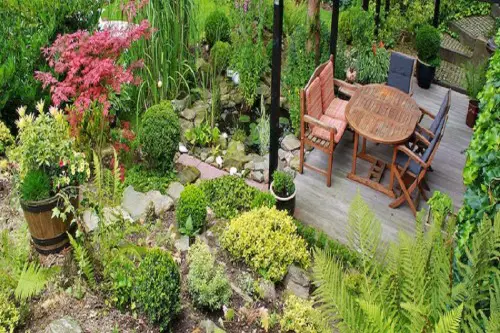
Stacking planting zones—from ground covers to mid-level shrubs to tall climbers—can make a narrow space feel deeper and richer. This layout draws the eye upward and outward, building visual volume without expanding the footprint. Vertical variety breaks monotony and creates privacy. It’s landscaping with dimension, not just direction.
Add trellises, hanging planters, or raised beds to define each layer. Pair textural differences for contrast—like fuzzy lamb’s ear next to glossy hostas. A narrow lot thrives when it’s not all one level. Volume comes from layers, not width.
2. Linear Pathway Gardens
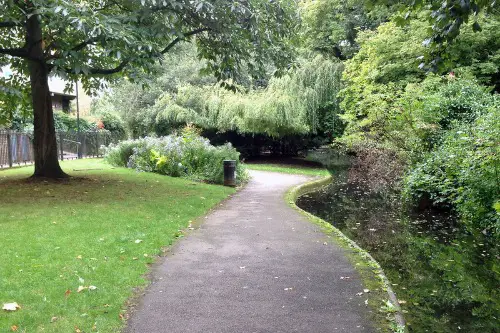
A garden built around a central pathway can transform a long, narrow lot into a graceful corridor of color and texture. By running a path down the middle or slightly off-center, you create zones for planting, seating, or sculpture on either side. It adds movement and structure—turning limitations into rhythm. A once-cramped space becomes a guided experience.
Use materials like gravel, pavers, or wood decking for the path, and flank it with alternating vertical plants or low borders. Lighting along the edges makes evening strolls more magical. This layout leans into the narrow footprint rather than fighting it. Suddenly your yard is a walkway of wonder.
3. Side Yard Courtyard
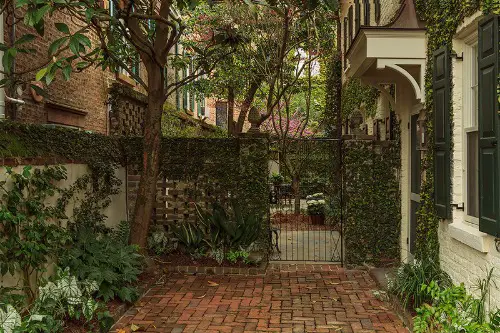
Transforming a narrow side yard into a private courtyard can offer intimacy and utility in overlooked space. Add a small bistro table, climbing vines, and a water feature for instant escape vibes. Fencing or hedging adds enclosure without crowding. It’s a hideaway tucked beside the main event.
Use angular hardscaping and wall-mounted decor to enhance flow. Vertical gardens or shelves help maximize space for greenery. Even a five-foot-wide strip can become a conversation nook. Privacy blooms where creativity leads.
4. Diagonal Planting Beds
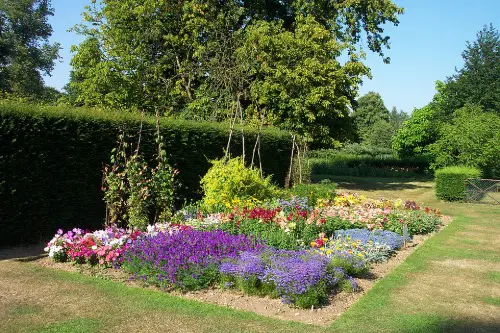
By positioning beds or pathways on a diagonal, you break the rigid feel of a narrow plot and create dynamic angles. It tricks the eye into reading the space as more expansive and flowing. Diagonal layouts also open planting options, letting sun and shade mix more organically. Narrow feels less linear—and more liberated.
Combine this with low fencing or curved borders to soften visual edges. Native grasses and staggered flowering groups enhance depth. With a diagonal layout, your garden dances instead of marching. Movement makes space feel generous.
5. Split-Level Terraces
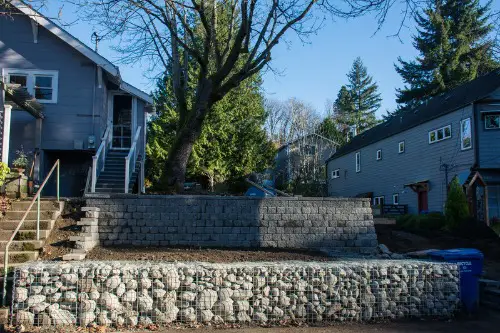
If your narrow lot has a slope—or you’re willing to build it—terraced levels can add spacious complexity. Create one area for lounging, another for raised vegetables, and a third for greenery. Each tier has its own identity and microclimate. It’s vertical space redefined as spatial character.
Use retaining walls, stone steps, or wood platforms to distinguish the zones. Terraces invite variety—each with a view of the next. You’re stacking experience, not just dirt. Suddenly one narrow yard holds three unique chapters.
6. Green Tunnel Garden
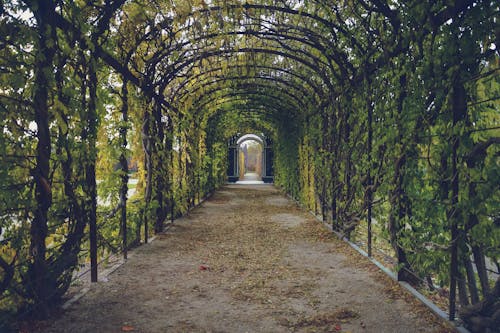
A “green tunnel” garden uses archways, overhanging vines, and climbing plants to turn a narrow lot into a botanical corridor. It feels immersive, shaded, and serene—even with minimal width. Benches tucked under arches or paths lined with hanging blooms add depth and enclosure. You enter a passage, not just a path.
Train clematis, roses, or honeysuckle on arched trellises. Use low boxwoods or herbs to define the floor layer. When your garden becomes a tunnel, you move through it emotionally as well as physically. It’s intimacy by design.
7. Modular Raised Beds
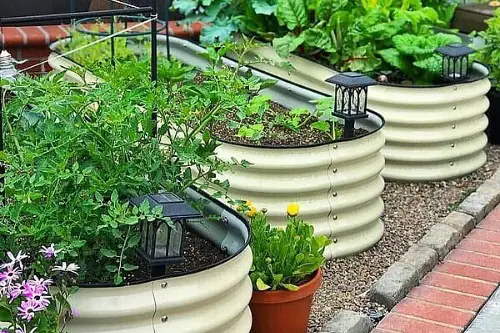
Raised beds arranged in alternating or staggered layouts can make narrow spaces feel both structured and flexible. The key is placing them to guide movement—rather than lining them up like a grid. You get focused planting zones and easy access, even in tight strips. Gardening becomes navigation.
Choose heights that vary slightly to add dimension. Integrate gravel or mulch paths between beds for drainage and aesthetics. Modular layouts are perfect for veggie plots, pollinator patches, or themed beds. A narrow space can be productive—and stylish.
8. Mirror and Reflection Strategy
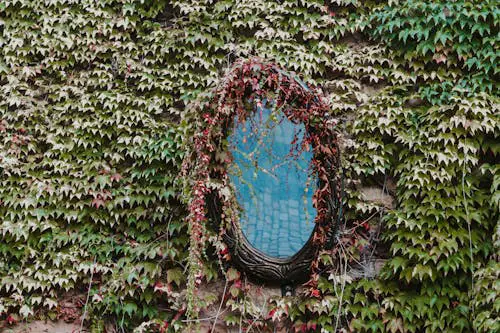
Using mirrors, reflective surfaces, or water features can visually double the perceived space of a narrow garden. A mirrored wall on one side or a reflecting pool creates illusion and light play. It’s a psychological trick—but with botanical payoff. Narrow stops meaning small—it starts meaning strategic.
Pair reflective elements with climbing greenery or light-colored walls. At night, solar lights amplify the effect. It’s not about how much space you have—it’s how deeply it resonates. Beauty multiplies when design reflects back.
This post 8 Garden Layouts That Work Surprisingly Well in Narrow Lots was first published on Greenhouse Black.
